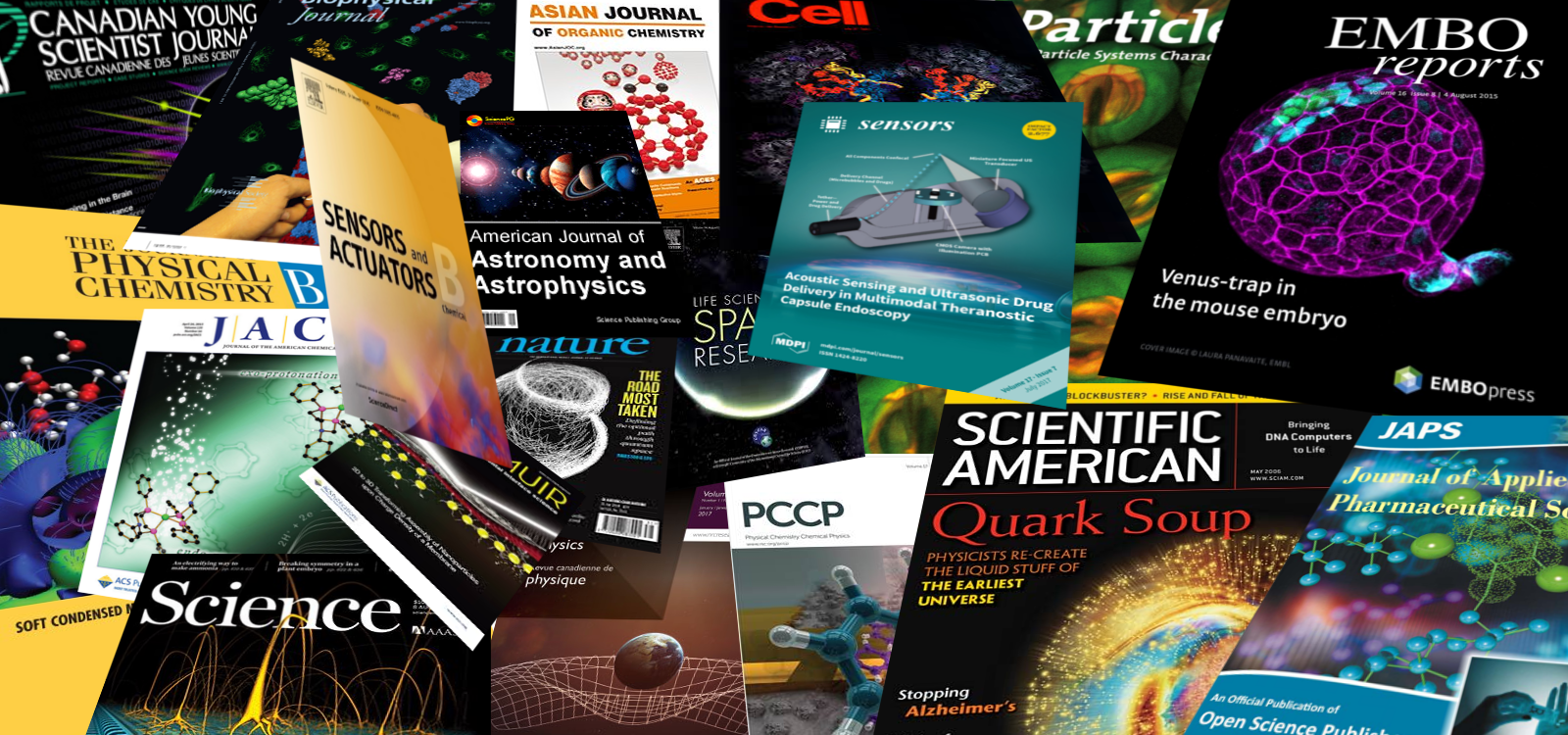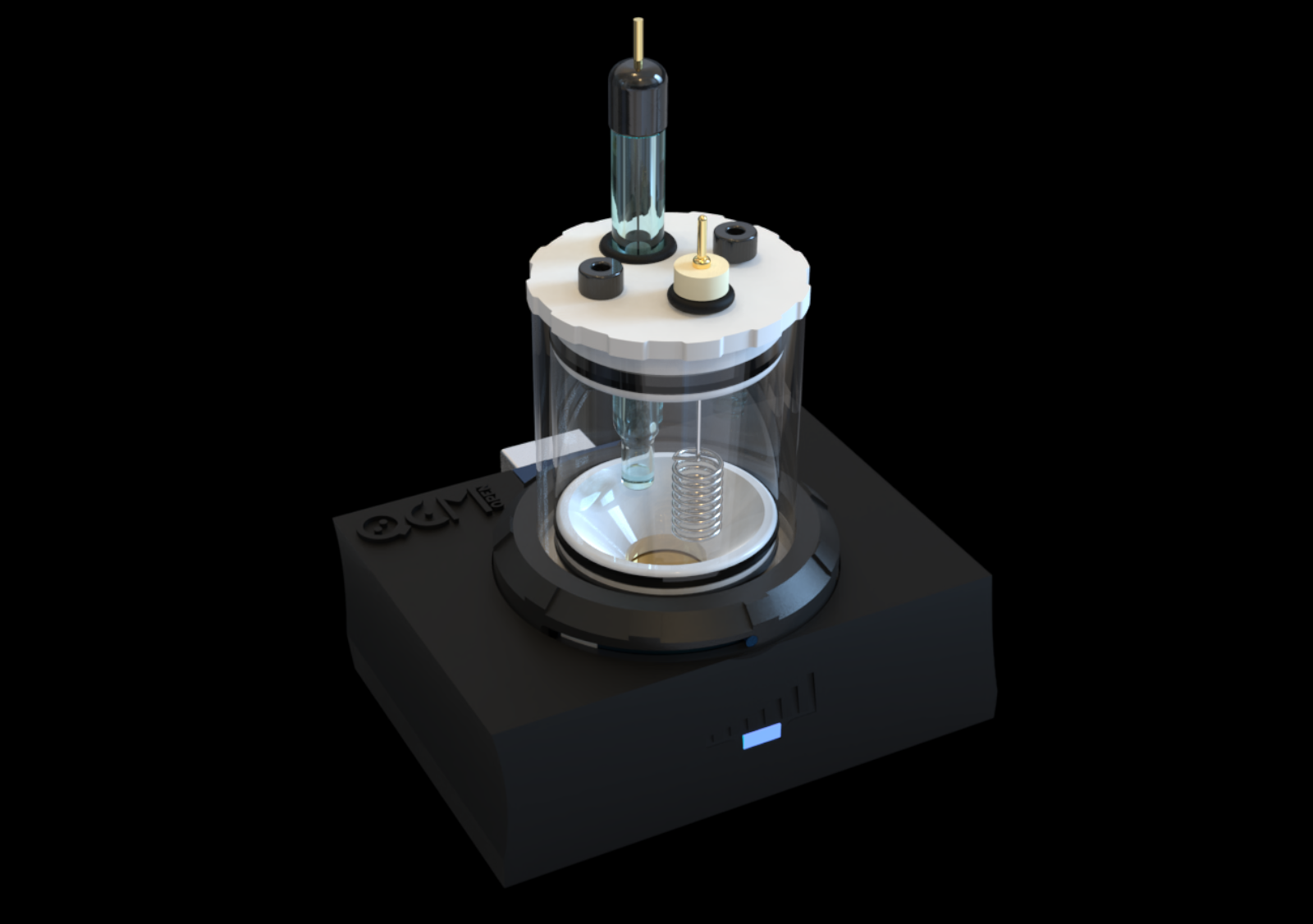openQCM – Powered by Novaetech S.r.l

Scientific Papers
Publications citing the applications of openQCM (by Novaetech S.r.l.) instruments and accessories in scientific research.
The list of scientific papers published on the most important journals showing the usage of openQCM in several scientific fields, such as thin film deposition, chemical sensors, biological research and biosensors.
Because of the large number of publications, we are reorganizing everything by subject areas. This will take some time. Thank you for your patience
2025
Lazarova, Katerina; Bozhilova, Silvia; Docheva, Martina; Pavlova, Ketrin; Alexieva, Gergana; Christova, Darinka; Babeva, Tsvetanka
Hygrosensitive Response and Characteristics of Copolymer Coatings with Potential for Humidity Monitoring Journal Article
In: Coatings, vol. 15, no. 8, 2025, ISSN: 2079-6412.
Abstract | Links | BibTeX | Tags: Copolymers, humidity, openQCM NEXT, optical sensing, QCM, Quartz Crystal Microbalance, Thin films
@article{coatings15080954,
title = {Hygrosensitive Response and Characteristics of Copolymer Coatings with Potential for Humidity Monitoring},
author = {Katerina Lazarova and Silvia Bozhilova and Martina Docheva and Ketrin Pavlova and Gergana Alexieva and Darinka Christova and Tsvetanka Babeva},
url = {https://www.mdpi.com/2079-6412/15/8/954},
doi = {10.3390/coatings15080954},
issn = {2079-6412},
year = {2025},
date = {2025-08-14},
urldate = {2025-01-01},
journal = {Coatings},
volume = {15},
number = {8},
abstract = {Newly developed hygrosensitive poly(vinyl alcohol) derivatives comprising grafted poly(N,N-dimethylacrylamide) chains of varied length and graft density are presented. The optical, sensing, and hydration properties of these copolymer thin films prepared by spin-coating were systematically studied. Refractive indices (n), absorption coefficients (k), and thicknesses (d) were calculated via curve fitting of the reflection spectra. Reflectance measurements across a relative humidity range of 5% to 95% were used to evaluate the humidity sensing behavior. Coating swelling exceeding 100% was observed. Hydration levels under high humidity conditions were studied using a quartz crystal microbalance method. This revealed approximately 24% water content in the polymer with the higher grafting density and shorter PDMA chains compared to around 31% in the copolymer with longer PDMA brushes that were loosely grafted The potential application of these copolymers as responsive materials for advanced humidity sensing is discussed. A combined optical and gravimetric approach for characterizing the humidity sensing properties of thin nanosized coatings is demonstrated, providing opportunities for advanced characterization of new functional materials, thus broadly contributing to the state of the art of sensor technologies.},
keywords = {Copolymers, humidity, openQCM NEXT, optical sensing, QCM, Quartz Crystal Microbalance, Thin films},
pubstate = {published},
tppubtype = {article}
}
Newly developed hygrosensitive poly(vinyl alcohol) derivatives comprising grafted poly(N,N-dimethylacrylamide) chains of varied length and graft density are presented. The optical, sensing, and hydration properties of these copolymer thin films prepared by spin-coating were systematically studied. Refractive indices (n), absorption coefficients (k), and thicknesses (d) were calculated via curve fitting of the reflection spectra. Reflectance measurements across a relative humidity range of 5% to 95% were used to evaluate the humidity sensing behavior. Coating swelling exceeding 100% was observed. Hydration levels under high humidity conditions were studied using a quartz crystal microbalance method. This revealed approximately 24% water content in the polymer with the higher grafting density and shorter PDMA chains compared to around 31% in the copolymer with longer PDMA brushes that were loosely grafted The potential application of these copolymers as responsive materials for advanced humidity sensing is discussed. A combined optical and gravimetric approach for characterizing the humidity sensing properties of thin nanosized coatings is demonstrated, providing opportunities for advanced characterization of new functional materials, thus broadly contributing to the state of the art of sensor technologies.
Macklin, Jack; Pfrang, Christian; Wady, Paul; Liu, Wanli; Davidson, Ruaridh; Milsom, Adam; Squires, Adam
In: Langmuir, vol. 0, no. 0, pp. null, 2025, (PMID: 40235269).
Abstract | Links | BibTeX | Tags: humidity, lipids, openQCM Holder, openQCM Q-1, QCM, Quartz Crystal Microbalance, Thickness, Thin films, Water
@article{doi:10.1021/acs.langmuir.4c05158,
title = {Use of Humidity Controlled Quartz Crystal Microbalance with Simultaneous Grazing Incidence Small Angle X-ray Scattering to Investigate the Self-assembly and Energetics of Lipid Thin Films},
author = {Jack Macklin and Christian Pfrang and Paul Wady and Wanli Liu and Ruaridh Davidson and Adam Milsom and Adam Squires},
url = {https://doi.org/10.1021/acs.langmuir.4c05158},
doi = {10.1021/acs.langmuir.4c05158},
year = {2025},
date = {2025-04-16},
urldate = {2025-04-16},
journal = {Langmuir},
volume = {0},
number = {0},
pages = {null},
abstract = {We present a novel method of analyzing lyotropic liquid crystal mesophases─self-organized amphiphile-water nanomaterials─using in situ grazing-incidence small-angle X-ray scattering (GI-SAXS) on a quartz crystal microbalance (QCM) in a controlled humidity environment. This combination simultaneously gives nanostructural dimensions and phase symmetry (through SAXS), compositional data (% water by weight, from QCM data), and water activity within the sample (from the equilibrium relative humidity above the film), as the sample film takes up and releases water during humidity sweeps. Analysis of the combined data provides immediate access to information typically built up from experiments on multiple individual samples prepared at different fixed compositions. Our approach greatly reduces the required sample quantities and preparation time while avoiding issues with sample-to-sample variations thanks to the collection of the multiple parameters simultaneously. It also extends the accessible range to the low water content region of the phase diagram, which is harder to access by fixed composition measurements and is highly relevant to coatings and powders exposed to ambient humidities. Here, we present data on dimyristoylphosphatidylcholine/water lamellar phases. Our calculated bilayer thickness and interbilayer repulsion values show good agreement with published data obtained from multiple individual samples, and we clearly demonstrate the ability to extend to lower water contents.},
note = {PMID: 40235269},
keywords = {humidity, lipids, openQCM Holder, openQCM Q-1, QCM, Quartz Crystal Microbalance, Thickness, Thin films, Water},
pubstate = {published},
tppubtype = {article}
}
We present a novel method of analyzing lyotropic liquid crystal mesophases─self-organized amphiphile-water nanomaterials─using in situ grazing-incidence small-angle X-ray scattering (GI-SAXS) on a quartz crystal microbalance (QCM) in a controlled humidity environment. This combination simultaneously gives nanostructural dimensions and phase symmetry (through SAXS), compositional data (% water by weight, from QCM data), and water activity within the sample (from the equilibrium relative humidity above the film), as the sample film takes up and releases water during humidity sweeps. Analysis of the combined data provides immediate access to information typically built up from experiments on multiple individual samples prepared at different fixed compositions. Our approach greatly reduces the required sample quantities and preparation time while avoiding issues with sample-to-sample variations thanks to the collection of the multiple parameters simultaneously. It also extends the accessible range to the low water content region of the phase diagram, which is harder to access by fixed composition measurements and is highly relevant to coatings and powders exposed to ambient humidities. Here, we present data on dimyristoylphosphatidylcholine/water lamellar phases. Our calculated bilayer thickness and interbilayer repulsion values show good agreement with published data obtained from multiple individual samples, and we clearly demonstrate the ability to extend to lower water contents.
Malhotra, Jaskaran Singh; Duarte, Clara Dávila; Reichert, Per; Krishnan, Deepthy; Sundberg, Jonas
Quantification of Methane in Water at Parts Per Billion Sensitivity Using a Metal–Organic Framework-Functionalized Quartz Crystal Resonator Journal Article
In: ACS Applied Nano Materials, 2025.
Abstract | Links | BibTeX | Tags: chemical sensors, greenhouse gas emissions, hydrocarbons, Metal organic frameworks, methane monitoring, openQCM NEXT, QCM, Quartz Crystal Microbalance, Thin films, wetlands
@article{malhotra2025quantification,
title = {Quantification of Methane in Water at Parts Per Billion Sensitivity Using a Metal–Organic Framework-Functionalized Quartz Crystal Resonator},
author = {Jaskaran Singh Malhotra and Clara Dávila Duarte and Per Reichert and Deepthy Krishnan and Jonas Sundberg},
url = {https://pubs.acs.org/doi/abs/10.1021/acsanm.4c06883},
doi = {https://doi.org/10.1021/acsanm.4c06883},
year = {2025},
date = {2025-02-26},
urldate = {2025-02-26},
journal = {ACS Applied Nano Materials},
publisher = {ACS Publications},
abstract = {Wetlands and water bodies are essential sources of methane emissions, a greenhouse gas that is roughly 25 times more potent than carbon dioxide. However, the biological production, fluxes, and interplay between methane and carbon dioxide due to microbial activity must be better understood. This is primarily attributed to the lack of sensor technology to provide the required spatial and temporal resolution. Herein, we demonstrate how a porous metal–organic framework material can create a sensor to quantify dissolved methane. The sensor is based on a quartz crystal microbalance, which measures methane adsorption using a quartz resonator functionalized with the material. Combining the quartz crystal microbalance and the nanoporous material yields fast response times and high sensitivity. This is due to a favorable partitioning coefficient between the empty pores of the material and the aqueous phase, promoting rapid migration of dissolved methane into the material. The result is a sensor system that achieves equilibration and response times under 60 s with parts per billion sensitivity. The high sensor performance is based on microporous pore size distribution, surface hydrophobicity, and crystallite size, yielding strong synergy. A fully functioning prototype has been designed, built, and evaluated to demonstrate real-life applicability and obtain a response from methane-spiked lake water. The modular nature of metal–organic frameworks opens possibilities for creating materials for selective sensing of other aqueous species. Thus, our study showcases the importance of materials for methane sensing and environmental monitoring in general.},
keywords = {chemical sensors, greenhouse gas emissions, hydrocarbons, Metal organic frameworks, methane monitoring, openQCM NEXT, QCM, Quartz Crystal Microbalance, Thin films, wetlands},
pubstate = {published},
tppubtype = {article}
}
Wetlands and water bodies are essential sources of methane emissions, a greenhouse gas that is roughly 25 times more potent than carbon dioxide. However, the biological production, fluxes, and interplay between methane and carbon dioxide due to microbial activity must be better understood. This is primarily attributed to the lack of sensor technology to provide the required spatial and temporal resolution. Herein, we demonstrate how a porous metal–organic framework material can create a sensor to quantify dissolved methane. The sensor is based on a quartz crystal microbalance, which measures methane adsorption using a quartz resonator functionalized with the material. Combining the quartz crystal microbalance and the nanoporous material yields fast response times and high sensitivity. This is due to a favorable partitioning coefficient between the empty pores of the material and the aqueous phase, promoting rapid migration of dissolved methane into the material. The result is a sensor system that achieves equilibration and response times under 60 s with parts per billion sensitivity. The high sensor performance is based on microporous pore size distribution, surface hydrophobicity, and crystallite size, yielding strong synergy. A fully functioning prototype has been designed, built, and evaluated to demonstrate real-life applicability and obtain a response from methane-spiked lake water. The modular nature of metal–organic frameworks opens possibilities for creating materials for selective sensing of other aqueous species. Thus, our study showcases the importance of materials for methane sensing and environmental monitoring in general.

